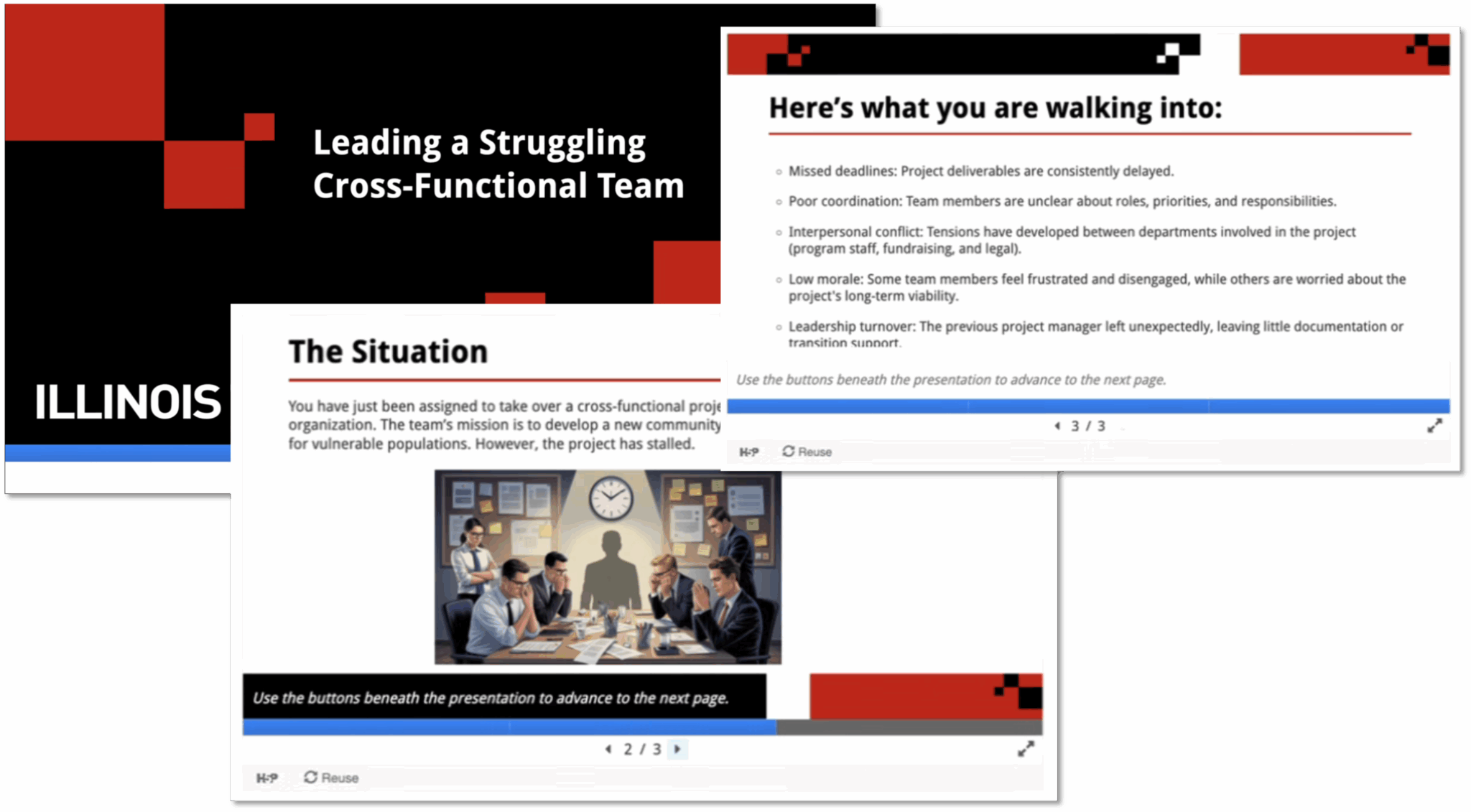- Featured Example: PA 502 - Organizational Behavior
- Course Developer: Dr. Aarn Cao
- Risepoint ID: Anabel Larson
In online learning, readings, videos, and other traditional resources still play an essential role. They offer opportunities to ground students in key concepts and flexibility for students to revisit materials at their own pace. But in some key moments, especially when introducing applied, real-world problems, interactive content can do more than inform: it can immerse!
Tools like H5P make it possible to create low-barrier, high-impact learning experiences that transform our more static materials into dynamic, decision-driven challenges. Students can explore and engage, rather than just read or watch. They starting learning by doing.
This example from PA 502 – Organizational Behavior shows how a set of static written instructions was reimagined as an interactive leadership simulation, helping students step into a real-world scenario before learning the theoretical models that would help them respond.
Design Challenge
In previous course designs, Dr. Cao had provided students with an engaging written scenario: a brief case description meant to introduce them to the dynamics of organizational complexity. While useful, the static, written format risked passive skimming. This was especially true in an asynchronous online format where it’s hard to gauge engagement.
Dr. Cao and Anabel recognized the need to draw students in from the start of the scenario to help them experience the messiness of organizational life, rather than just read about it.
Course Vision
The design team envisioned an immersive scenario that would act as a diagnostic challenge where students would face a realistic situation: taking over a struggling cross-functional team within a nonprofit.
Using H5P, they created a click-through, interactive presentation in which students are dropped into a leadership role. They’re presented with details of a stalled project, introduced to interpersonal tensions, and asked to reflect on the dynamics at play without being told how to solve it.
This gave students an active, emotional entry point into module content and grounded abstract frameworks in a lived organizational experience.
The image below is taken from a Course Design Guide draft during course development. Here, the Risepoint Instructional Designer helps identify key moments to draw students in with visuals and interactives!
Executing the Design
The H5P scenario appears in Module 1 as a required opportunity for reflection. It replaced a plain-text version of the case setup and was embedded directly into the LMS page.
Key Design Elements
- Realistic Scenario: Students learn they’ve inherited a troubled team, with problems ranging from unclear roles to leadership turnover.
- Click-to-Reveal Navigation: Each slide in the H5P presentation builds on the story, simulating the way new information surfaces in real workplace challenges.
- Embedded Prompts: Learners are asked to pause and think: What’s happening here? What would you do first?
- Bridges to Theory: This scenario primes learners for the week’s formal frameworks, helping them build motivation and mental models before instruction begins.
This image illustrates how click-through scenarios help bring key content delivery moments to life!
Explore the Scenario
Want to Try?
Interactive content doesn’t require major redesign. Start small with one concept or scenario where active engagement could help students process complexity.
Try this:
Identify a dense or challenging moment in your course. Could students explore it through clickable slides, decision-making scenarios, or timed reveals?
Talk with your Risepoint ID about how H5P can create interactive content like decision trees, scenarios, or guided image explorations.
Give students a chance to respond before being taught, then show them how the theory applies.
Supplement, don’t replace: keep readings and videos, but position interactive content as an opportunity to reflect or practice.





